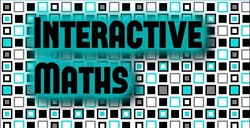Reverse Percentages
The below QuickQuestion Interface © generates 10 random questions on finding the original amount after a given increase or decrease by a percentage.
Choose which type of percentages you want to use (Non-Calculator percentages are 1%, 5%, 10%, 20%, 25%, 50%, 75%).
Then decide if you want to have questions where the amount has been increased, decreased or a mixture of both by choosing Random.
Finally, by setting Multiplier to yes, you will be asked for the multiplier needed for the calculation, rather than the actual original amount.
Choose which type of percentages you want to use (Non-Calculator percentages are 1%, 5%, 10%, 20%, 25%, 50%, 75%).
Then decide if you want to have questions where the amount has been increased, decreased or a mixture of both by choosing Random.
Finally, by setting Multiplier to yes, you will be asked for the multiplier needed for the calculation, rather than the actual original amount.
Ideas for Teachers
This is a good alternative to the QQI activity, if you just want to put 10 questions on the board. Then you can get answers from students to enter in the boxes before checking them, and correcting as necessary.
However, the real power in this activity is when you get the students using it themselves. In a computer lesson, set them all going on the activity, and get them to repeat until they get every question correct.
Or you can set it as a homework, telling them the conditions to use (different conditions for different students to differentiate the homework). Then get them to do one or two sets, all correct, and to take a screen shot and either email it to you, or, even better, stick it in their books. Since the questions are random, every student will get a different set of questions, and the immediate feedback means they can go back and correct their work straight away.
This is a good alternative to the QQI activity, if you just want to put 10 questions on the board. Then you can get answers from students to enter in the boxes before checking them, and correcting as necessary.
However, the real power in this activity is when you get the students using it themselves. In a computer lesson, set them all going on the activity, and get them to repeat until they get every question correct.
Or you can set it as a homework, telling them the conditions to use (different conditions for different students to differentiate the homework). Then get them to do one or two sets, all correct, and to take a screen shot and either email it to you, or, even better, stick it in their books. Since the questions are random, every student will get a different set of questions, and the immediate feedback means they can go back and correct their work straight away.
|
If you like the page then tweet the link using the button on the right.
|
|
If you have found interactive-maths.com a useful website, then please support it by making a donation using the button opposite.
|
|
